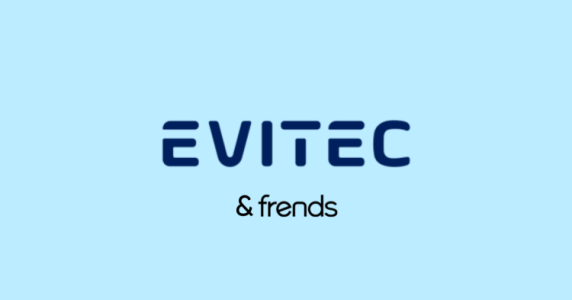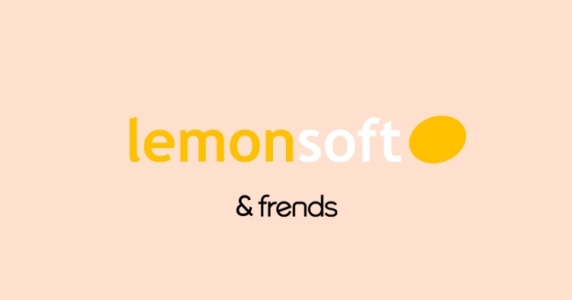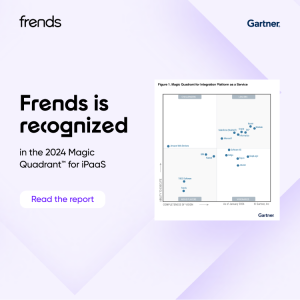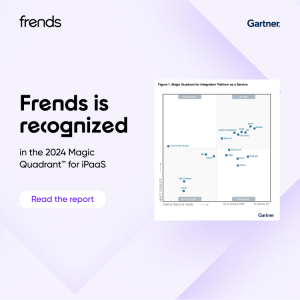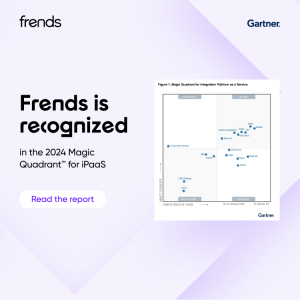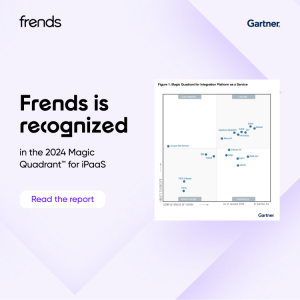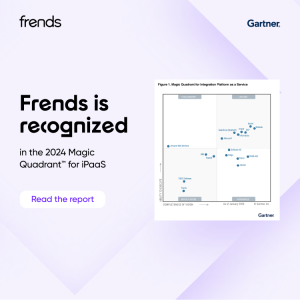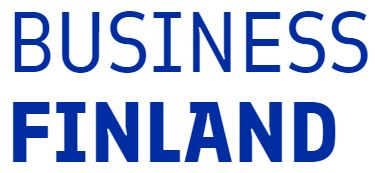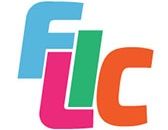Learn cloud computing basics and advanced topics in 6 minutes

Multi-cloud, Compliant Cloud, or Data Fabric, what are those?
Cloud computing in different forms has been a hot and evolving topic over the past decade. Use 6 minutes to learn the basics and advanced topics of cloud computing. What's there for me and my business to use?
Cloud computing refers to an approach where computational power comes from a supplier. This supplier has an enormous infrastructure compared to traditional infrastructure providers.
Benefits of cloud computing
Cloud computing decrease the cost of service
Cloud Computing giants can leverage and share vast amounts of computational power. They have massive data centers compared to traditional computation service providers. Moreover, these giants, like Azure and AWS, minimize their resources' idle time. They are minimizing infrastructure idling and sheer volume. These two allow a lower cost for capacity than the situation where everyone has their hardware. When doing things "big," these cloud vendors make security and availability affordable.
All modern integration platforms (iPaaS) run their core in the Cloud. For example, Frends is available in Azure and European Compliant Cloud Cleura.
Cloud computing eases Maintenance and Management
Instead of managing the underlying infrastructure, the customer outsources this burden. Cloud computing service providers take care of all the tedious infrastructure-related tasks.
Having someone else to take care of essential infra is attractive to the user of the services—no need to maintain an expensive skillset of infrastructure know-how. An integration platform as a service (iPaaS) is a primary use case for Cloud Computing. Hence, the Cloud offers a manageable and scalable environment for integration platforms.
Agile and cost-effective software development
Cloud services allow developers to deploy new resources programmatically. They can manage, for example, scaling on the fly. The programmatic approach has several benefits. It also allows developers to have the same development environment in every Cloud. This removes the burden of the development environment always being slightly different.
Putting clouds together into a multi-cloud
The term multi-cloud refers to the use of more than one cloud provider. Concentrating on one cloud provider might give you volume discounts. Yet, there are other benefits of multi-cloud.
- You can choose best-of-breed services. Then combine it with a neural text interpretation from another cloud;
- Avoid a single point of failure by making your service redundant by putting it into two cloud providers;
- Avoid cloud vendor lock-in.
The cons are:
- The complexity of managing two vendors instead of one;
- No volume discounts equal higher costs;
- No centralized control and monitoring.
Modern integration platform like Frends solves the third challenge. With Frends, you can deploy integration execution units called Agents to every cloud platform. Frends low-code visualizes the processes. You can run processes across multiple cloud platforms. You still have a single, centralized development, control, and monitoring for everything.
Going for the Edge - Pros and Cons of Edge Computing
"By 2025, more than 50% of enterprise-managed data will be created and processed outside the data center or Cloud," according to Gartner.
So while there is still a movement from the ground to the Cloud, the early adopters are moving inside the Cloud from the "centre to edge."
Edge Computing means bringing the computational power closer to the consumer. There is a "distance" on the internet called latency. Latency grows the more servers and hops data must make during its travel from source to destination. For example, suppose your video call quality is terrible, or your voice call is hard to interpret due to interference. In that case, it might be that you have too much latency. Bringing the data and computational power to the "edge" of the Cloud closer to the consumer reduces this latency. Standard solutions for edge computing are video streaming, online gaming, and video calls.
One might argue with Gartner's wording: "outside of the cloud." The current big tech companies providing cloud infrastructure and services are the same players now selling "the edge." Google has, for example, a new data center in Finland. I would say that edge is also a part of the Cloud, close to the service consumer in the sense of latency and jitter.
Data Fabric - the next step from data hubs
Historically, companies tried to solve the data-access problem with point-to-point integrations. Unfortunately, the point-to-point creates an integration spaghetti. In spaghetti, the growth of cost and problems is exponential. Fortunately, data hubs control and transfer data in a centralized manner. Yet, data hubs suffer from the siloed and ever-changing nature of enterprise data. Centralization is an effort that does not match an exponentially growing amount of data. Not even inside one enterprise when it grows.
A data fabric is an architectural approach to data that tries to consider the nature of data
Data is everywhere and changes constantly. This makes it hard to control in a centralized way. In the Data Fabric, a set of data services provide consistent capabilities across various endpoints. Those endpoints span across hybrid multi-cloud environments. Data Fabric is an architecture that unifies data management practices and practicalities. It does not matter if the data and system are in Cloud, on-premises, or on edge devices. Rules are the same. For example, these service rules may require linear scalability and global namespaces. Unified metadata about the services distributed to the whole fabric is also mandatory. Metadata and global names can access services via the entire fabric.
An iPaaS with multi-cloud support is a perfect platform to build data fabric services. Due to the nature of the data fabric concept, you should not restrict the tooling but the architecture and rules of how data is provided and managed.
Beware the GDPR boogie - Compliant Cloud
In 2020 Privacy Shield between US and EU was nullified based on the Schrems II ruling. Schrems II means that there is a risk that US-owned clouds and applications may be ruled uncompliant with GDPR.
The important thing is to understand that privacy issues at the cloud level are a risk, not something that will happen for sure. Currently, it is Meta (Facebook) and Google that are struggling with unmatching EU GDPR and US legislation. So what happens when these legal cases expand to cover the cloud providers? Fortunately, this is something we have not yet seen. Frends offers a Compliant Cloud option. Frends core, Agents, or both are in Compliant Cloud in this option. Frends Compliant Cloud is a risk mitigation solution for cities and municipalities. They cannot ask citizen permission to store their data. Hence, it is their legal duty to do so. Compliant Clouds offer a wide range of compliance with standards and regulations. Frends Compliant Cloud infrastructure offers compliancy for standards in healthcare and finances.
Adaptation of Cloud Computation
Through these many benefits, the industry has embraced Cloud Computation. The amount of cloud-stored corporate data has globally increased from 30% in 2015 to almost 60% in 2022. At the same time, Cloud computing is moving. Latency depended on services moving closer to consumers.
Even though the share of computation done in the Cloud keeps increasing year over year, Cloud Computation has some downsides that require more traditional computational capabilities. For example, the same reason that Cloud Computation is much more cost-effective comes at the expense of data control and security. You are in the same environment with thousands of other users. A Cloud provider is a third party to whom you give your and your customer's data; this might be an issue. Cloud providers are also favorite targets for hackers as one breach leads to multiple targets instead of one. Sometimes, the subscription payment model does not fit the enterprise, especially when the cloud cost varies based on use. Estimates are that a healthy 80-20 balance of Cloud vs. Ground Computing will be established, at least for the foreseeable future. A hybrid cloud-capable integration platform that can execute automation and host APIs in any cloud or ground environment is a key to harnessing the power of the Cloud and keeping the things that need to be... in the ground.

Lisätietoja
Tagit
Liiketoimintaprosessi
 |
Tietohallinto |
 |
Toiminnanohjaus ERP |
Erikoisosaaminen
 |
Integraatiot |
Omat tagit
 Frends iPaaS - Asiantuntijat ja yhteyshenkilöt
Frends iPaaS - Asiantuntijat ja yhteyshenkilöt
 Frends iPaaS - Muita referenssejä
Frends iPaaS - Muita referenssejä
 Frends iPaaS - Muita bloggauksia
Frends iPaaS - Muita bloggauksia
It- ja ohjelmistoalan työpaikat
- Laura - Product Owner
- Laura - Systems Engineer
- Laura - C++/Qt-kehittäjä
- Laura - Tietohallintopäällikkö
- Fellowmind - Senior UI/UX Designer
- Fellowmind - Business Intelligence Consultant
- Laura - Gaming Product Security Lead
Premium-asiakkaiden viimeisimmät referenssit
- Codemate - Driving digital transformation in the media industry with Flutter
- Codemate - Designing the user experience for the Nucu App
- TNNet Oy - Aksulit Oy – TNNet osoittautui parhaaksi palvelinkumppaniksi
- SD Worx - Säästöjä, sujuvuutta ja varmuutta pilvipalveluiden avulla
- SD Worx - Stella hankki tarpeitansa vastaavan palkkajärjestelmän – nyt säästyy monta työpäivää kuukaudessa
- Vetonaula Oy - Vetonaula HTJ:n liiketoiminnan kasvun mahdollistajana
- SD Worx - LUMENE ja SD Worx yhteistyössä jo yli 10 vuotta
Tapahtumat & webinaarit
- 19.11.2024 - The Future of Software - Embracing Collaboration in an AI-Powered World
- 19.11.2024 - Tehokkuutta ja säästöjä low-code-ratkaisuilla
- 27.11.2024 - Green ICT -ekosysteemitapaaminen III: Ohjelmistojärjestelmien virrankulutuksen mittaaminen ja kasvihuonepäästöjen arviointi
- 27.11.2024 - Digitaalisen asiakaskokemuksen uusi aikakausi
- 28.11.2024 - Copilot-webinaari – Mielekkäämpää tietotyötä turvallisesti
- 05.12.2024 - Green ICT VICTIS -hankkeen kick off -tilaisuus
- 15.01.2025 - Datavastuullisuuden valmennus: hanki valmiudet vastuulliseen datan ja tekoälyn hyödyntämiseen
Premium-asiakkaiden viimeisimmät bloggaukset
- TNNet Oy - Ethän lepsuile sähköpostin suojauksessa – Sipulisuojaus kuntoon!
- TNNet Oy - Mitä TNNet tarjoaa pilvipalvelukumppanina?
- TNNet Oy - Tietoturvavalvonta SOC – Kansainvälinen tiimi havainnoi ja reagoi TNNetin kanssa 24/7
- ICT Elmo Oy - Mitä on IT-palvelunhallinta
- ICT Elmo Oy - Mitä on IT-palvelunhallinta
- Hion Digital Oy - Ostajan muistilista: Mitä ottaa huomioon ennen verkkosivuston uudistamista?
- S1 Networks Oy - Kun hypervisor-maailma järkkyy, kotimainen osaaminen astuu kehiin

|
Digitalisaatio & innovaatiot blogimediaBlogimediamme käsittelee tulevaisuuden liiketoimintaa, digitaalisia innovaatioita ja internet-ajan ilmiöitä |
































